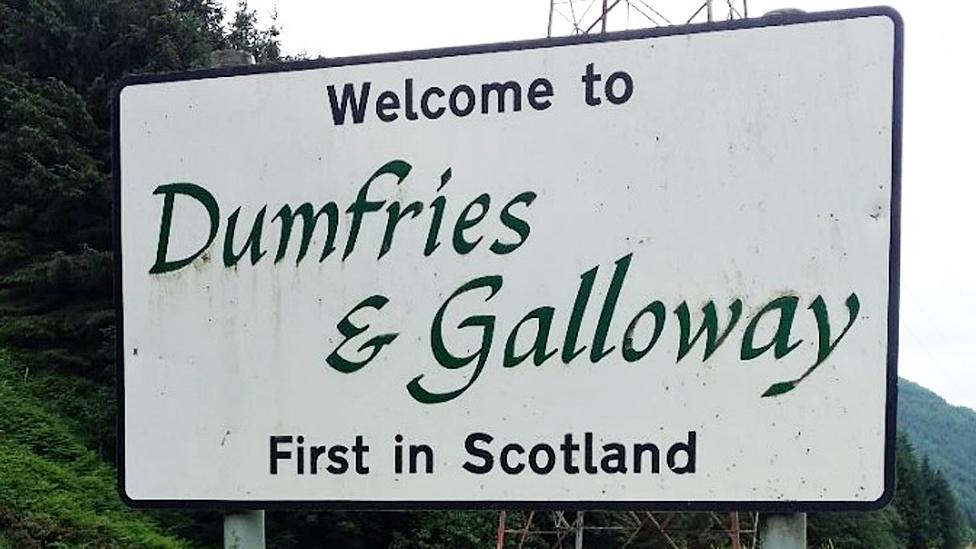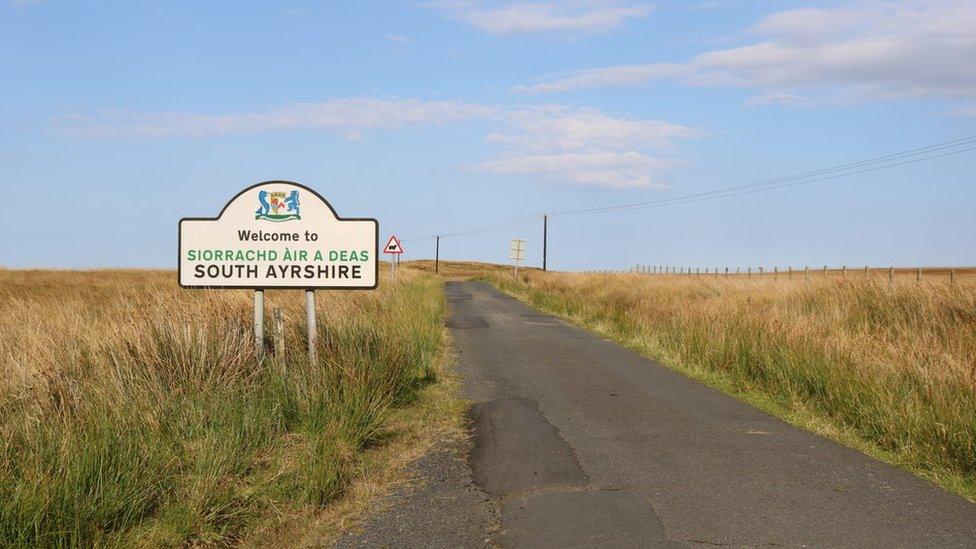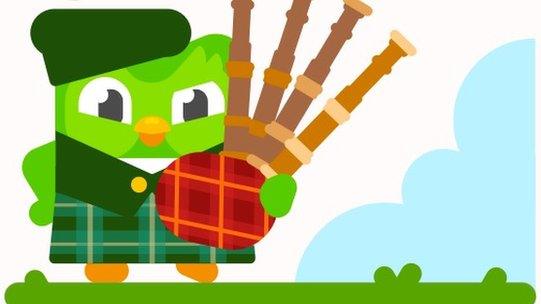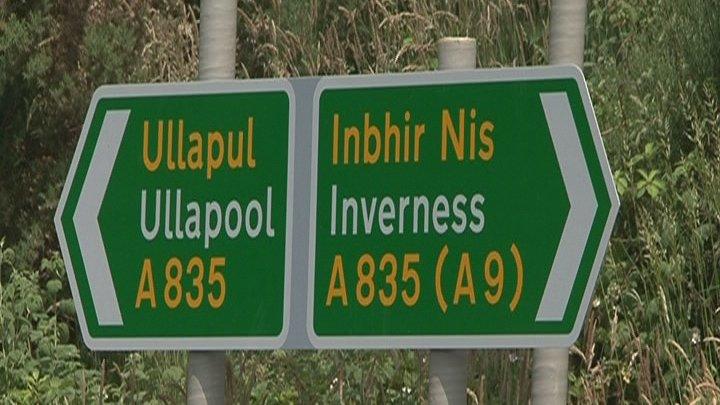Dumfries and Galloway Council weighs up Gaelic on welcome signs
- Published

The welcome signs are not in Gaelic at the moment
A Scottish council has agreed to consider adding Gaelic to its welcome signs on roads entering the region.
There are currently 20 such boards on routes into Dumfries and Galloway - written only in English.
The chairman of promotion group Gàidhlig Dumgal has contacted the council to ask it to look at the move.
The organisation is particularly keen to see the bilingual signs on the entry routes into Galloway like the A75, A77, A714 and A713.
Why Dumfries and Galloway?

Signs at the Scotland-England border do have bilingual greeting
Gàidhlig Dumgal, the organisation set up nearly a decade ago to promote the language in the region, said there was a "a strong degree of interest" from locals and visitors alike in the Gaelic heritage of the area.
It added that there could be long-term economic benefits, as well as increasing awareness of the language.
The group said a form of Gaelic - Galwegian Gaelic - was spoken in Galloway from around the 5th Century to some time between 1600 and 1800.
Dumfries and Galloway Council's Gaelic Language Plan (GLP) has also recognised the "important role" it played in the linguistic heritage of the region.
"Gaelic speakers resident in our council area form a small but important and culturally active part of our community," it said.
What happens elsewhere?

Councils across Scotland have their own GLPs, which have been introduced at different times.
At present only five out of 32 local authorities told the BBC that they had their welcome signs in both English and Gaelic - Argyll and Bute, Comhairle nan Eilean Siar, Highland, South Ayrshire and West Dunbartonshire.
However, a number of others are already on a similar path to the one being proposed in Dumfries and Galloway.
They have agreed to consider adding Gaelic to the signs as and when they need to be replaced.
A total of 13 said they had no plans to change their English-only welcome any time in the near future.
What would it cost?

A number of regions already carry the signs in Gaelic
There are already Gaelic signs in Dumfries and Galloway at the border with England - as there are in the Scottish Borders - which welcome motorists to Scotland.
However, this would go further and see them introduced, gradually, at all entries to the region.
A report to councillors in Dumfries and Galloway, external said that if they wanted to go ahead with the move it could be done on a "cost neutral" basis.
That would mean signs in both languages would only be go up as part of its routine replacement programme or when the current ones are damaged beyond repair.
Councillors voted in favour of the move with designs and a report to come back at a later date.
An attempt to drop the proposals was defeated.
The signs are, however, said to be quite durable which could mean several years will pass before all entries to the region would carry a Gaelic welcome.
- Published23 January 2020

- Published28 November 2019

- Published31 August 2012
